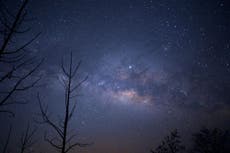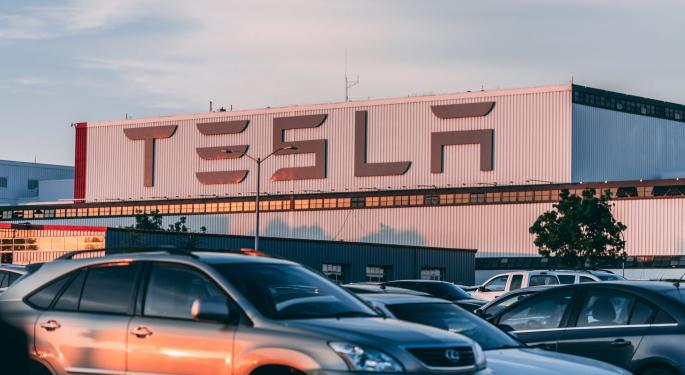SOLAR ECLIPSE 2020: RARE SUMMER SOLSTICE 'RING OF FIRE' TAKES PLACE THIS WEEK
Annular eclipse coinciding with longest day of the year will not happen again until 2039
Anthony Cuthbertson@ADCuthbertson 6/18/2020
A rare type of solar eclipse will coincide with the longest day of the year this week, marking only the second time since 1982 that these astronomical events take place on the same day.
The annular solar eclipse will see the Sun, Moon and Earth align on Sunday, 21 June, creating a spectacular effect for sky gazers to witness across large parts of the world.
The Moon is at its furthest stage of its orbit around the Earth, known as its apogee, meaning it appears slightly smaller in the sky.
This means it is not able to completely block out the Sun, thus creating what some astronomers refer to as a "ring of fire".
At its maximum point of total eclipse, the Moon will block approximately 99.4 per cent of the Sun, though this will only last for a fraction of a second.
Read more

SpaceX is building Mars spaceports, Elon Musk reveals
Nasa has mapped the trajectory of the annular solar eclipse, which sees its path pass over the Democratic Republic of Congo, South Sudan, Ethiopia, Eritrea, Yemen, Oman, Pakistan, India, Nepal, China, Taiwan and Guam.
The eclipse will not be visible for people in the southern hemisphere, nor in more northerly latitudes like the UK.
The path of the annular solar eclipse on 21 June, 2020 (Nasa/ Google Maps)
It will also be impossible to view from North America, while travel restrictions due to the coronavirus pandemic mean that people will be unable to fly to locations where it will be visible.
For those unable to see it in person, Timeanddate.com will be hosting a live stream of the eclipse on its website.
Solar eclipse 2017
Show all 12


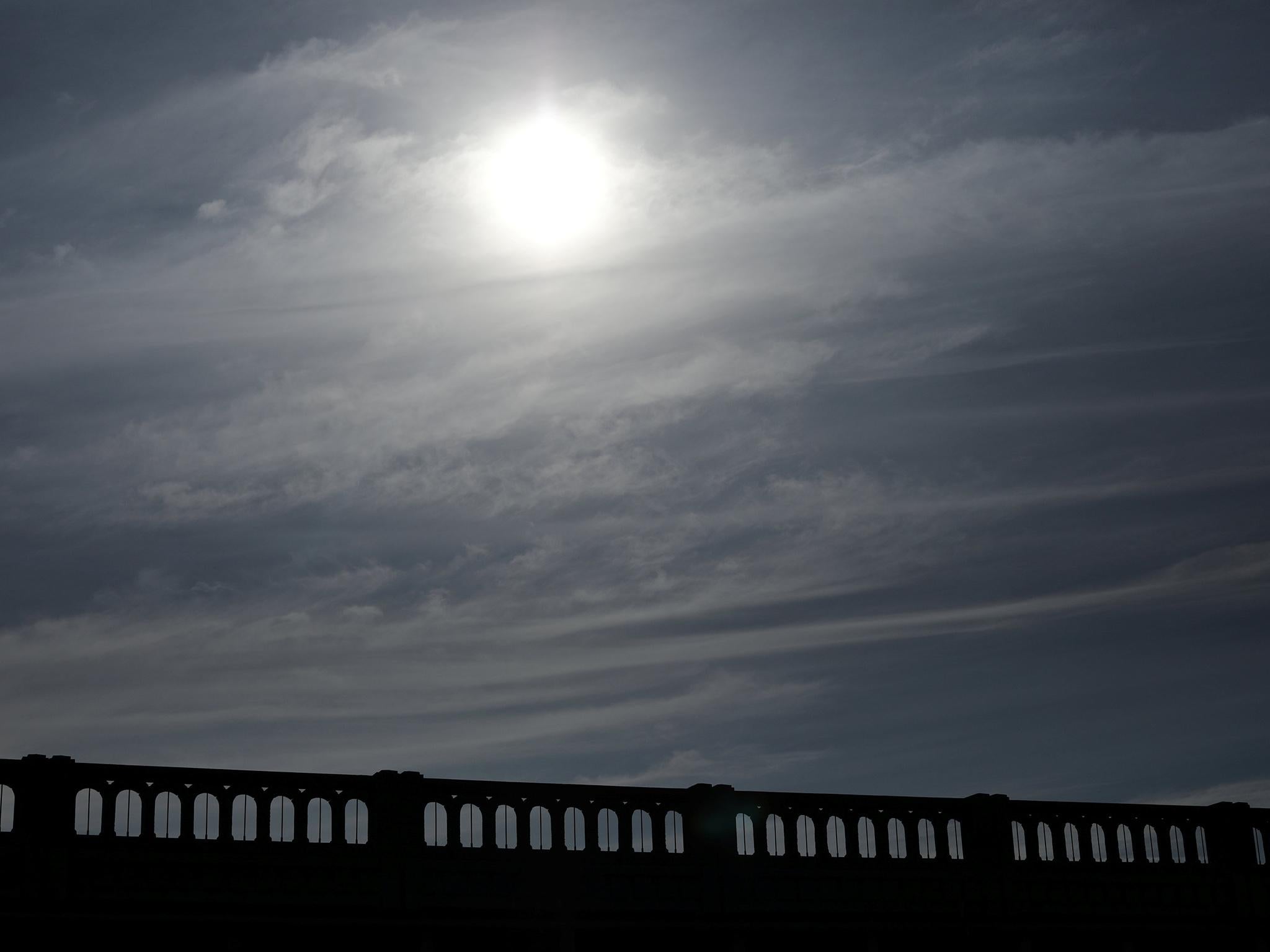

The eclipse occurs on the day that the Sun is at its most northerly point during the year, known as the Summer Solstice in the northern hemisphere and the Winter Solstice in the southern hemisphere.
For those north of the equator, the solstice is the longest day of the year and is often celebrated by watching sunrise or sunset.
In the UK, the sun will rise at 4.43am and set at 9.22pm, meaning people will enjoy 16 hours and 39 minutes of daylight.
More northerly latitudes will experience 24 hours of daylight, including regions of Canada, Greenland, Norway, Sweden, Finland and Russia.
It is the first time since 2001 that the solstice coincides with a solar eclipse, and will not happen again until 2039.
Sunday’s “Ring Of Fire” Solar Eclipse Brings Positive Change
Elizabeth Gulino June 19, 2020, REFINERY29

This weekend, we’ll be experiencing quite the astrological event. Not only is the summer solstice occurring, but we’ll also be undergoing the new moon solar eclipse on June 21 at exactly 12:47 a.m. ET. It won’t be a total eclipse, though: There will still be some surface area of the sun peaking out from behind the moon, creating a stunning “ring of fire” effect.
“Solar eclipses are extra powerful lunar events, rallying the energy of three new moons in one,” Narayana Montúfar, senior astrologer at Astrology.com and Horoscope.com, tells Refinery29. “This one, in particular, is even more important because it happens the same day as the summer solstice and the day the sun enters Cancer.” Montúfar says that this solar eclipse is a turning point in human history, poised to accelerate social change. This particular eclipse is happening at zero degrees Cancer, meaning it will bring emotional needs to the surface.
Montúfar says that at this eclipse, both the sun and the moon will be forming a tense quincunx aspect to task-master Saturn in Aquarius. “At its worst, Saturn represents the rules and limitations that have been imposed on us and that over time have turned corrupt and oppressive,” she explains. “Although Cancer is a sign that would normally want to stay home and feel cozy, this link to Saturn says that the actions we take during this new moon have long-term has consequences.”
These rules and limitations from Saturn may relate directly to the police brutality and abuse of power we’ve been seeing not just recently, but for years. This isn’t the time to sit idly by and let bygones be bygones — this solar eclipse marks the time to take action and use your voice. What you choose to do this weekend in terms of social justice might just have a long-lasting effect.
And, thankfully, the planets are here to back us up. “Mars and Jupiter will be on our side, forming a beautiful sextile,” Montúfar explains. “They will lend us the courage, ambition, and good judgment we need to keep going and keep fighting for what we believe in.”
This particular eclipse also has an interesting Sabian symbol attributed to it. In astrology, images derived from Spiritualist-medium Elsie Wheeler give a description of each of the 360 separate degrees of the zodiac, notes Leslie Hale, psychic astrologer at Keen.com. “The Sabian symbol for zero degrees Cancer is, ‘on a ship the sailors lower an old flag and raise a new one,'” Hale says. This can be interpreted as a change brought about by all of the societal unrest we’re currently experiencing concerning racism, police brutality, and inequality in general.
This celestial event will only be visible across central Africa, the southern Arabian Peninsula, Pakistan, Northern India, and South Central China — but if you’re not in those areas, that doesn’t mean you can’t still take partake in harnessing its power.
“Solar eclipses mark new beginnings. Because of all of the intense energy, it’s important to be clear on your intention in order to manifest your truest desires,” astrologer Lisa Stardust tells Refinery29. “I like to do bath magic when the moon is in a water sign because that way we can harness the power of the element, which in this case is water.”
Interested in performing your own bath magic? Stardust lays it out. “First, write the intention you wish to achieve down on a piece of paper. Be clear and concise. Add a cup of Epsom salt, a dash of cinnamon, rose petals, and charge a rose quartz crystal under the moon to absorb its potency. While in the bath, place the crystal on your heart chakra to heal your emotions and to open yourself to new possibilities,” she says.
Astrologer and occultist Shawntee Cato agrees: Water rituals are the way to go for this particular solar eclipse. “Cancer is a highly nurturing and protective energy,” she explains. “Water is one of the best ways to engage with our spiritual nature as well as ground our energy.”
Cato’s solar eclipse bath ritual looks a little different than Stardust’s — and is simpler. She recommends salt, Florida water (which can be bought through Amazon, Walmart, and other online stores), and a white candle. Crystals are also great to add, especially smoky quartz, black tourmaline, or clear quartz, if you have them. These stones will help maximize your zen under June’s ring of fire eclipse.
This solar eclipse is about taking action. Raise your voice, say what needs to be said, and do what needs to be done. Only good things can come from speaking up for justice.
Nasa has mapped the trajectory of the annular solar eclipse, which sees its path pass over the Democratic Republic of Congo, South Sudan, Ethiopia, Eritrea, Yemen, Oman, Pakistan, India, Nepal, China, Taiwan and Guam.
The eclipse will not be visible for people in the southern hemisphere, nor in more northerly latitudes like the UK.

The path of the annular solar eclipse on 21 June, 2020 (Nasa/ Google Maps)
It will also be impossible to view from North America, while travel restrictions due to the coronavirus pandemic mean that people will be unable to fly to locations where it will be visible.
For those unable to see it in person, Timeanddate.com will be hosting a live stream of the eclipse on its website.
Solar eclipse 2017
Show all 12




The eclipse occurs on the day that the Sun is at its most northerly point during the year, known as the Summer Solstice in the northern hemisphere and the Winter Solstice in the southern hemisphere.
For those north of the equator, the solstice is the longest day of the year and is often celebrated by watching sunrise or sunset.
In the UK, the sun will rise at 4.43am and set at 9.22pm, meaning people will enjoy 16 hours and 39 minutes of daylight.
More northerly latitudes will experience 24 hours of daylight, including regions of Canada, Greenland, Norway, Sweden, Finland and Russia.
It is the first time since 2001 that the solstice coincides with a solar eclipse, and will not happen again until 2039.
Sunday’s “Ring Of Fire” Solar Eclipse Brings Positive Change
Elizabeth Gulino June 19, 2020, REFINERY29

This weekend, we’ll be experiencing quite the astrological event. Not only is the summer solstice occurring, but we’ll also be undergoing the new moon solar eclipse on June 21 at exactly 12:47 a.m. ET. It won’t be a total eclipse, though: There will still be some surface area of the sun peaking out from behind the moon, creating a stunning “ring of fire” effect.
“Solar eclipses are extra powerful lunar events, rallying the energy of three new moons in one,” Narayana Montúfar, senior astrologer at Astrology.com and Horoscope.com, tells Refinery29. “This one, in particular, is even more important because it happens the same day as the summer solstice and the day the sun enters Cancer.” Montúfar says that this solar eclipse is a turning point in human history, poised to accelerate social change. This particular eclipse is happening at zero degrees Cancer, meaning it will bring emotional needs to the surface.
Montúfar says that at this eclipse, both the sun and the moon will be forming a tense quincunx aspect to task-master Saturn in Aquarius. “At its worst, Saturn represents the rules and limitations that have been imposed on us and that over time have turned corrupt and oppressive,” she explains. “Although Cancer is a sign that would normally want to stay home and feel cozy, this link to Saturn says that the actions we take during this new moon have long-term has consequences.”
These rules and limitations from Saturn may relate directly to the police brutality and abuse of power we’ve been seeing not just recently, but for years. This isn’t the time to sit idly by and let bygones be bygones — this solar eclipse marks the time to take action and use your voice. What you choose to do this weekend in terms of social justice might just have a long-lasting effect.
And, thankfully, the planets are here to back us up. “Mars and Jupiter will be on our side, forming a beautiful sextile,” Montúfar explains. “They will lend us the courage, ambition, and good judgment we need to keep going and keep fighting for what we believe in.”
This particular eclipse also has an interesting Sabian symbol attributed to it. In astrology, images derived from Spiritualist-medium Elsie Wheeler give a description of each of the 360 separate degrees of the zodiac, notes Leslie Hale, psychic astrologer at Keen.com. “The Sabian symbol for zero degrees Cancer is, ‘on a ship the sailors lower an old flag and raise a new one,'” Hale says. This can be interpreted as a change brought about by all of the societal unrest we’re currently experiencing concerning racism, police brutality, and inequality in general.
This celestial event will only be visible across central Africa, the southern Arabian Peninsula, Pakistan, Northern India, and South Central China — but if you’re not in those areas, that doesn’t mean you can’t still take partake in harnessing its power.
“Solar eclipses mark new beginnings. Because of all of the intense energy, it’s important to be clear on your intention in order to manifest your truest desires,” astrologer Lisa Stardust tells Refinery29. “I like to do bath magic when the moon is in a water sign because that way we can harness the power of the element, which in this case is water.”
Interested in performing your own bath magic? Stardust lays it out. “First, write the intention you wish to achieve down on a piece of paper. Be clear and concise. Add a cup of Epsom salt, a dash of cinnamon, rose petals, and charge a rose quartz crystal under the moon to absorb its potency. While in the bath, place the crystal on your heart chakra to heal your emotions and to open yourself to new possibilities,” she says.
Astrologer and occultist Shawntee Cato agrees: Water rituals are the way to go for this particular solar eclipse. “Cancer is a highly nurturing and protective energy,” she explains. “Water is one of the best ways to engage with our spiritual nature as well as ground our energy.”
Cato’s solar eclipse bath ritual looks a little different than Stardust’s — and is simpler. She recommends salt, Florida water (which can be bought through Amazon, Walmart, and other online stores), and a white candle. Crystals are also great to add, especially smoky quartz, black tourmaline, or clear quartz, if you have them. These stones will help maximize your zen under June’s ring of fire eclipse.
This solar eclipse is about taking action. Raise your voice, say what needs to be said, and do what needs to be done. Only good things can come from speaking up for justice.





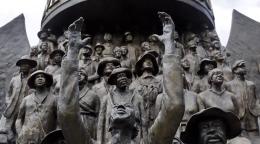
 '
'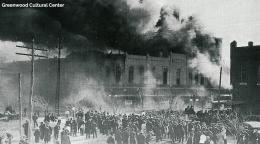




 Natchez "30th of May" marchers, circa 1950s. (Courtesy NAPAC Museum)
Natchez "30th of May" marchers, circa 1950s. (Courtesy NAPAC Museum) A statue in Galveston, Texas, depicts a man holding the state law that made Juneteenth a state holiday. (David J. Phillip/AP)
A statue in Galveston, Texas, depicts a man holding the state law that made Juneteenth a state holiday. (David J. Phillip/AP)




